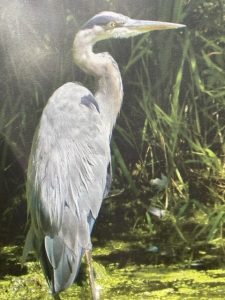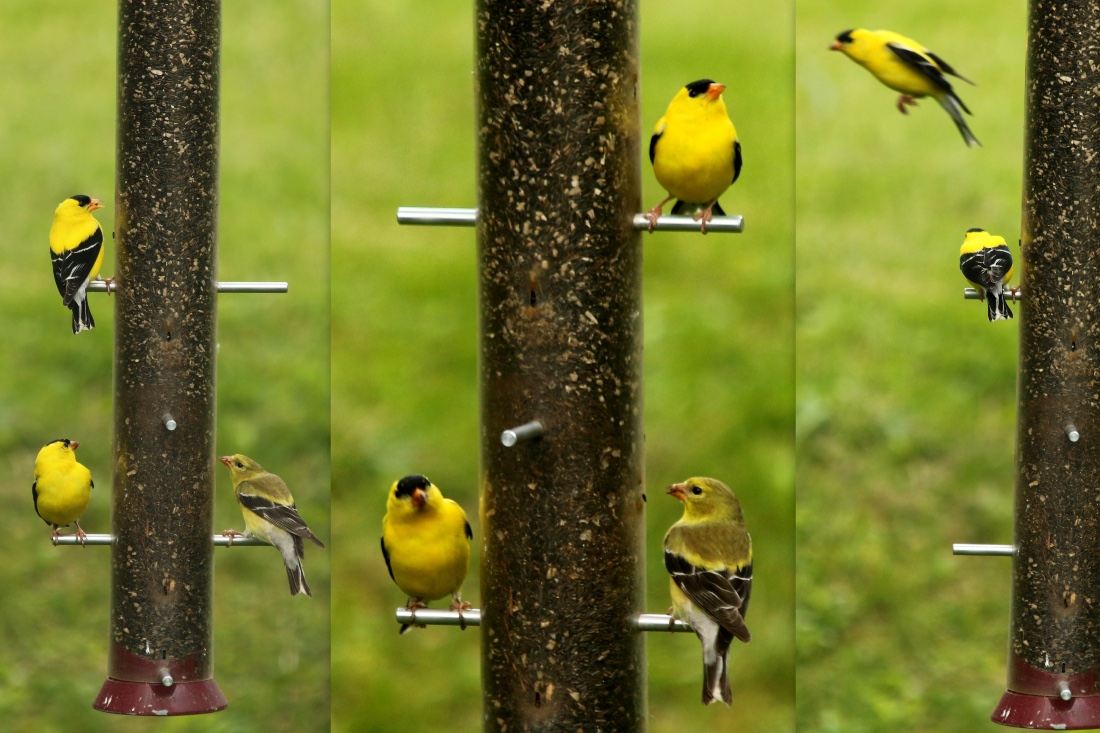— by Mike Jones for Sustainable Orillia
As you may have heard, Bird Friendly Orillia—in collaboration with local organizations such as Sustainable Orillia, Green Orillia, the Orillia Naturalists’ Club, and the Couchiching Conservancy—are working towards obtaining “Bird Friendly” certification from Nature Canada in an effort to mitigate the steep decline in bird populations in our local area and across North America.
A landmark study by Canada’s National Wildlife Research Centre and Cornell University’s Lab of Ornithology have found that the wild bird populations have decreased by 29%–about three billion birds – since 1970. The study found that over 90% of these birds, about 2.5 billion, were common birds such as blackbirds, sparrows and finches—the very kind found in the gardens of Orillia. It is certain that human activity is to blame for most of the decline in birds and insects, mainly through the loss of habitat in the form of forests, wetland and grassland, and the overuse of pesticides.
On the positive side, we can definitely atone somewhat for our impact by making our gardens more bird-friendly and welcoming.
 Paradoxically, this does not necessarily mean doing things to our gardens. On the contrary, it means stopping things that we do either from habit or through conforming to some prevalent idea of what a yard should be. Large manicured lawns are a case in point: fertilised four times a year whether required or not, dosed with pesticides, clipped (often by a pollution-spewing gas mower) to an inch (or less) of its life and the clippings removed. Not a “weed” to be seen—or any other form of life, except maybe a forlorn robin searching unsuccessfully for worms which are no longer present.
Paradoxically, this does not necessarily mean doing things to our gardens. On the contrary, it means stopping things that we do either from habit or through conforming to some prevalent idea of what a yard should be. Large manicured lawns are a case in point: fertilised four times a year whether required or not, dosed with pesticides, clipped (often by a pollution-spewing gas mower) to an inch (or less) of its life and the clippings removed. Not a “weed” to be seen—or any other form of life, except maybe a forlorn robin searching unsuccessfully for worms which are no longer present.
Why not relax a little, save time, energy and expense, and create a more bird (and bee) friendly, sustainable environment? This means fertilizing once a year or less, never using pesticides, never clipping grass less than two inches in length (using a mulching blade), and never, ever, removing the cut grass which will be taken care of by the worms and converted into water-retaining compost and rich soil. The robins will give you their heartfelt thanks, as well. Bees and other insects will relish the flowers that will appear as if by magic once you stop using pesticides and scalping your meadow. It may not be the same lawn anymore, but it will be much more interesting.
Orillia became a Bee Friendly City in 2019, partly in response to the decline in honey bees and other pollinators. The City has been moved to provide nectar-rich flower plantings in the parks and streets to support pollinators. They also encourage the concept of not mowing your lawn until the end of May so hummingbirds, bees and other insects can access a much-needed source of nutrition from the early Spring flowers. The pollinating insects are fodder for our insectivorous birds such as phoebes. wrens and flycatchers, and you will have the added bonus and pleasure of seeing the Spring progression of scilia, snowdrops, dog violets, sweet woodruff, clouds of forget-me-nots and a plethora of dandelions (a much maligned but beautiful flower) in your meadow.
Continuing on this theme, forget fussy exotic trees and shrubs. Instead, plant bird-friendly, undemanding, native species. Again, you will save energy and money without forgoing anything in the way of colour and natural beauty. Check out www.birdgardens.ca, a site that will provide all the information required about the available options whether your garden is sunny or shady, wet (lucky you if it is) or dry, loam or sand, and for your particular hardiness Zone which in Orillia is USDA 5b.
Some of my favourite bird-friendly trees, shrubs and flowers include mountain ash, downy serviceberry, viburnum, milkweed, and goldenrod—and no, the goldenrod pollen does not cause allergies; it is unjustly maligned because it blooms at the same time as ragweed, whose pollen definitely does.
According to Scottish tradition, mountain ash, or rowan, if planted in front of your door, will effectively prevent witches from gaining entrance to your abode. This has been borne out unequivocally by much double-blind, peer-reviewed research which showed that there was no instance of a witch being able to enter a house with a rowan tree planted in front of it. A word of warning, however: Scottish tradition also states that any harm done to this tree, or its removal, will result in really bad luck to the perpetrator, so be careful with your tree-trimming.
A garden with these attributes should be enough to provide natural food for birds in the form of seeds, fruit, insects and invertebrates in the late Spring, Summer and Fall, so it should not really be necessary to supplement their food supply with feeders except possibly in the Winter months. Few birders, however, can resist doing so, for the pleasure of close-up observation of the comings and goings, squabblings and interactions of the various species.
An easily available food supply, however, will produce an unnatural concentration of birdlife that will lead to much fighting over territory—and that does attract the attention of avian predators such as shrikes or the neighbourhood sharp-shinned hawk, who will see bird feeders as their equivalent of a lunch counter. It can be heart-wrenching to hear the piteous cries of a downy woodpecker caught by a predator, tempting one to intervene, but doing so might well mean that the nestlings of the predator will go hungry. They certainly don’t have the option of a vegetarian diet.
Another necessity for a bird-friendly environment is a source of water for drinking and bathing, so bird baths and ornamental fountains can fit this bill. If nectar feeders for orioles and hummingbirds are provided, they can be fitted with a water-filled barrier to keep ants away, and these can double as a source of drinking water for chickadees and nuthatches. If you are lucky enough to have natural stream running through your property, you could modify it to form a pond or series of ponds which, if big enough, might attract ducks or the odd belted kingfisher. Even a small wetland can create a valuable oasis of diversity for both flora and fauna.
I have a friend whose property partly consisted of a cedar swamp which he considered draining. When persuaded this was not a good idea, he compromised by excavating and creating a large fish pond stocked with expensive Koi goldfish. Subsequently he called me and complained that “a (expletive) great Stork was cleaning out his fish.” This was the same person (whose bird identification skills might be a little suspect) who called to say he had seen a huge flock of penguins on Lake Couchiching which, of course, was the annual Fall flocking of male common mergansers, while the “stork” was none other than a great blue heron! Many of us would welcome such a magnificent visitor to our garden, even at the cost of a few fish, one such person being Carol Deimling who provided this lovely photograph.
________________
Part 2 in the series of “How to make your garden bird-friendly” will consider topics such as nesting sites (with particular emphasis on cavity nesters), where to locate nesting boxes, winter roosting boxes, and how you can make your own species-targeted boxes.
Though yet to be confirmed, Bird Friendly Orillia is hoping to hold a hands-on seminar on this topic in conjunction with local schools.
Instagram and Facebook @BirdFriendlyOrillia

